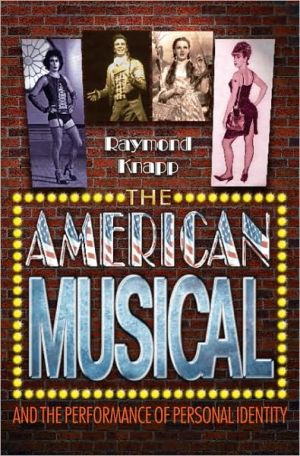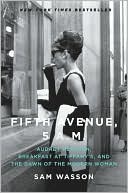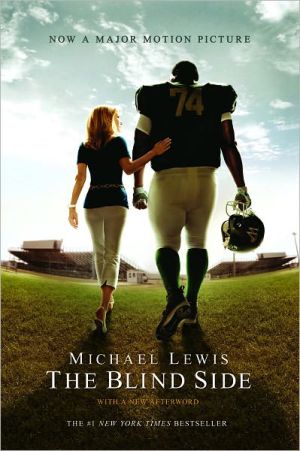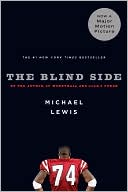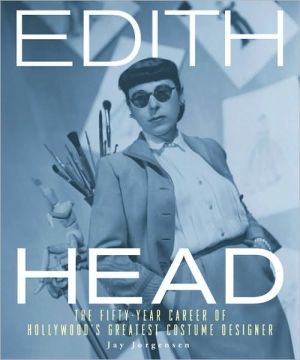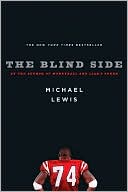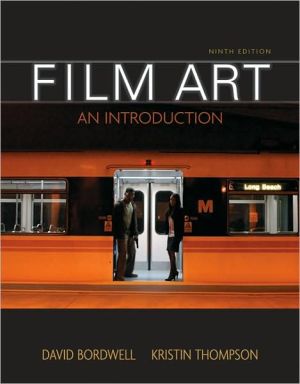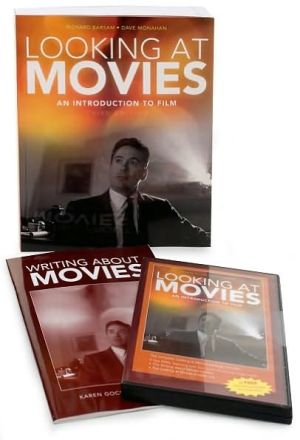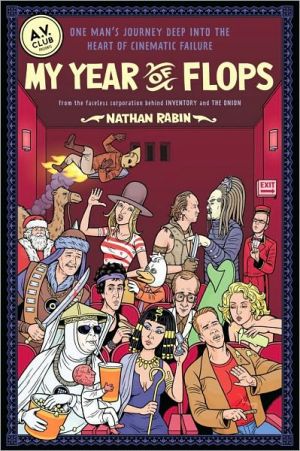The American Musical and the Performance of Personal Identity
The American musical has long provided an important vehicle through which writers, performers, and audiences reimagine who they are and how they might best interact with the world around them. Musicals are especially good at this because they provide not only an opportunity for us to enact dramatic versions of alternative identities, but also the material for performing such alternatives in the real world, through songs and the characters and attitudes those songs project.\ This book...
Search in google:
"Knapp speaks with an original voice and offers fresh perspectives. This will be regarded as one of the major books in the field."--Geoffrey Block, University of Puget Sound, General Editor, Yale Broadway Masters"This extraordinary, original book leaves well behind any lingering suspicion that the musical is not worthy of serious cultural analysis. The scholarship is superb, Knapp's writing clear and engaging."--Rose Rosengard Subotnik, Brown University Diana Calderazzo - Theatre Journal The American Musical and the Performance of Personal Identity is an insightful contribution to current scholarship on musical theatre. It integrates theoretical approaches based in both musicology and audience reception, and applies these approaches across the media of film and theatre. In so doing, it offers a transferable, revealing methodology for similarly sophisticated analyses of the role of musical theatre in American culture.
The American Musical and the Performance of Personal Identity\ \ By Raymond Knapp \ Princeton University Press\ Copyright © 2006 Princeton University Press\ All right reserved.\ ISBN: 978-0-691-12524-4 \ \ \ Chapter One\ THE VIENNESE CONNECTION Franz Lehár and American Operetta \ THE AMERICAN MUSICAL has sometimes been understood as the American answer to European operetta, or as an extension of the European tradition. A good case for these Connection and similar claims is easy enough to make, given the impact of Gilbert and Sullivan on late nineteenth-century American musical comedy and of Franz Lehár a few decades later. Moreover, the case need not be overwhelming in order to be fairly convincing. Thus, divergences from these formative American influences may be readily accounted for; after all, important differences also evolved between and among the principal European forms, so that one might simply argue that Americans, like their European predecessors, evolved their own distinct type of operetta, according to local tastes and interests. Or, to summarize the scenario that Gerald Bordman argues for, one might trace how an American type of musical comedy has been periodically enriched by returns to its European models, with Rodgers and Hammerstein, in particular, representing one of the most vigorous of these later returns, if seldom recognized as such.\ But it is just as easy to argue the other side of this issue.European operetta was largely a reaction against more serious operatic traditions, which by mid-nineteenth century had evolved into something quite serious indeed in the three main traditions that then flourished: Italian and German romantic opera, Wagnerian Musikdrama, and French grand opera. America had no comparable tradition to react against, although many attempted, often with some success, to transplant these European traditions to America, so that European opera did in fact provide a frequent foil for humor on the American musical stage. But in the main, American musicals took shape, as a genre, within a context almost diametrically opposed to the European situation. Instead of reacting against a thriving higher tradition-opera-they quite often strove to elevate an already "low" tradition into something more elevated, if not fully operatic. Regarding Viennese operetta in particular, American reception seemed oddly dissonant with European reception, even if both sides of the Atlantic came to an enthusiastic accord over The Merry Widow (1905, 1907 in London and New York). Thus, although Americans embraced the Gilbert and Sullivan operettas as (almost) their own-and here we might well remember that England also had no native high-art operatic tradition of any consequence-they did not similarly embrace either the French or the Viennese operetta traditions in the nineteenth century. Moreover, when they did respond enthusiastically to The Merry Widow, it was largely because of the show's greater sophistication relative to American fare, and not merely because of the escapist fun that the show offered (which was the basis of its appeal in Europe, in retrospect already well on its way to the cataclysm of World War I, a cataclysm that was first of all Vienna's).\ This greater sophistication had a number of facets, all of them easily associated with Europe. Musically, the show was deftly realized by Franz Lehár, a trained composer who had tried his hand at opera (if unsuccessfully) and had already composed popular waltzes and achieved mixed success with a handful of operettas before Die lustige Witwe (The Merry Widow) became the most widely performed operetta ever, playing across Europe with huge success before it was brought to America. But musical sophistication was only part of what The Merry Widow had to offer, for its story of sexual and political intrigue was presented with both frankness and a suave grace rich in nuance, with the latter serving to partly deflect the former, offering a face-saving interpretive strategy of deniability about just how much (if any) illicit sex the audience was supposed to be winking at. This blend of a frankly acknowledged sexuality with modes of graceful deflection became an important topic for Americans, who sometimes referred to it as "worldly" or "sophisticated," but often enough located its origin more specifically, with descriptive terms such as "European," "continental" (thus, as opposed to the presumably more respectable British), "Parisian," or "Viennese"-the latter two referring to the setting and original venue of The Merry Widow, respectively.\ This one signal success of Viennese operetta in America set off a long series of reverberations across the twentieth century, first in the spate of American offshoots that followed it (even if few other Viennese shows, including Lehár's, had much success in America). But this initial wave of enthusiasm was short-lived. Many blame World War I for the sudden lapse in America's enthusiasm for Viennese operetta so soon after The Merry Widow's American success; Vienna was, after all, the seat of the Austro-Hungarian Empire, the referential flashpoint-and our eventual enemy-in the Great War, as it was then called. But the genre did not simply disappear, as the leading American practitioners-Rudolf Friml and Sigmund Romberg-continued to have great success throughout the 1920s, with their authenticity seemingly guaranteed by their names (although Friml was born in Prague, and Romberg, like Lehár, in Hungary; Victor Herbert, their prominent older colleague who died in 1924, was born in Dublin but raised-and trained-in Germany). When synchronized sound made film musicals a practicality by the 1930s, operettas provided a rich body of source material, particularly since-however daring they might once have seemed-they had by then acquired an important patina of respectability, with their music being generally viewed as more elevated, and stemming from a more reputable tradition, than more "American" jazz-influenced styles. Many important operettas from earlier in the century were filmed, often substantially altered, several wxith Jeanette MacDonald (with still others being refashioned as vehicles for the child actress Shirley Temple). As color became more standard after World War II and into the 1950s, a new wave of film musicals included another large dose of revived operettas, most often with newly revised plots. Alongside this development, television provided yet another venue for keeping early works in the genre before a wide public, if often drastically cut.\ The operettas I've chosen for the first part of this chapter reflect this history fairly well. The Merry Widow was filmed with a vastly reworked plot by Ernst Lubitsch in 1934, with Jeanette MacDonald and Maurice Chevalier, and was filmed again in 1952, similarly unrecognizable in its refashioned plot and spare use of songs from the original; a live television version of the show was broadcast in 1958. Naughty Marietta, the most important of the early American operettas that followed The Merry Widow, was filmed with Jeanette MacDonald one year after she starred in Lubitsch's The Merry Widow and was broadcast live on television in 1955. (For other representative film versions from the 1930s and 1940s, and "second-wave" revivals as color films and in televised versions from the 1950s, see the list at the end of this chapter.)\ The quaintness of both these live televised performances and the lavish MGM operetta films of the 1950s inspired the hugely successful off-Broadway parody-operetta Little Mary Sunshine (1959), which makes many specific references to Naughty Marietta and other well-known operettas (including, most prominently, the 1924 Rose-Marie, filmed in 1936 and 1954). One may well argue that Little Mary Sunshine, in its affectionate campiness, was oblivious to the large dose of camp appeal already long recognized in the genre, but the show deftly struck a chord with audiences, who loved much of what operetta had to offer but winced at its dated sentimentality; it thus provides us with a useful gauge for assessing the devices and contrivances of operetta, as seen from the vantage point of the late 1950s. Certainly the success of the show confirms the separateness of the American musical from operetta by that stage of development. Indeed, for many who may not otherwise be familiar with the American operetta tradition, Little Mary Sunshine, enduringly popular in revival, is a surer point of reference than more traditional fare.\ If Little Mary Sunshine refers mainly to the American operetta tradition-although, surely, the assonance between the titles Little Mary Sunshine and The Merry Widow is no accident-the older European tradition serves as the most useful background for considering Stephen Sondheim's A Little Night Music (1973), with its confrontation between Old-World sensibilities and modernity, and its dance-infused score. Besides completing a usefully symmetrical frame for this chapter, A Little Night Music, in its very title, manages both to refer obliquely to Vienna (specifically, to Mozart's Eine kleine Nachtmusik, composed in Vienna and often used emblematically, as "background music," to represent Vienna's rich musical past) and to complete a string of verbal assonances that might also include Rose-Marie; thus, The Merry Widow-Naughty Marietta (or, perhaps, "Naughty Little Mary"?)-Rose-Marie-Little Mary Sunshine-A Little Night Music. Moreover, the words that accompany this string independently articulate a sexually suggestive symmetry (especially remembering that Little Mary Sunshine, among its many associations, refers to a particularly striking flower, a bearded iris): Widow-Naughty / Rose-Sunshine / Night Music.\ The Merry Widow, as it was presented to American audiences in 1907, was performed with its songs in rhymed translation, with a few minor cuts to its score, two interpolations of musical numbers in Act III (added by Lehár himself; see the website for the complete English-language song list), and some minor adjustments to its plot and comic byplay. In most respects, the English adaptation by Adrian Ross (the one most often staged in America, first performed in London earlier in 1907) is close enough to the original that it will not be necessary here to draw a particularly sharp differentiation between them, beyond noting a series of name changes and occasionally observing other concessions made to its English-speaking audiences in London and New York. Inevitably, of course, something is lost in translation, even with a fairly faithful adaptation such as this one, both because of the forced rhymes that such translations often produce (which, besides sounding quaint, also often result in an awkward fit between text and music) and because it is difficult to know with any precision what, in musical terms, would have seemed exaggerated and mannered about performance styles in 1905 Vienna versus 1907 New York. To some extent, something of The Merry Widow slips between the cracks that open between different levels of familiarity and perceived strangeness. Nevertheless, in the present context, Ross's adaptation of The Merry Widow may usefully be taken as the representative of the Viennese tradition in America, for that is indeed how it functioned historically.\ Because of the numerous versions of The Merry Widow that have since proliferated on film, all of them with plots wildly different from that of the original stage show, it will be useful to sketch the story here. Although the basic plotline remains much the same as in the Viennese original, Ross's English adaptation makes a number of name changes, the most important of which are as follows:\ die lustige Witwe Hanna Glawari becomes the merry widow Sonia Sadoya; the kingdom of Pontevedro becomes Marsovia; Baron Mirko Zeta becomes Baron Popoff; Valencienne (the baron's wife) becomes Natalie; Camille de Rosillon (her lover) becomes Camille de Jolidon; and Count Danilo Danilowitsch becomes Prince Danilo.\ The entire action takes place in Paris, where Baron Zeta (Popoff), who is afraid that the recently widowed Hanna's (Sonia's) fortune will be lost to Pontevedro (Marsovia) if she is to remarry with a foreigner-with catastrophic results for the small kingdom-enlists the help of fellow countryman Danilo, a notorious womanizer who was once romantically involved with Hanna. Meanwhile, Zeta's own wife, Valencienne (Natalie), is conducting an affair with Camille, of which only the Baron seems ignorant; although Valencienne seems to be trying to break off the affair (or, perhaps, end it before it truly begins), her behavior can be interpreted as "playing hard to get." Danilo agrees to help keep Hanna from marrying a foreigner but refuses to court her himself, since, although he has long been in love with her, he feels betrayed by her, believing she married her late husband for his money; this is why (we are given to understand) he now habitually spends his free time at the Parisian nightclub Maxim's. Hanna also loves him, but knows she will have to finesse their oddly oblique courtship. She flirts with a number of suitors at a ball before choosing Danilo as her partner for a "Ladies' Choice" waltz number, only to be outraged when he offers to auction the dance off among her would-be suitors, all of whom abandon the field. The first act ends with a bare rapprochement between them, as eventually she joins him in dancing the "Ladies' Choice" waltz ("Oh, Come Away").\ Act II begins with musical entertainments from Pontevedro hosted by Hanna, including characteristic dances and two parable-like folk songs, "Vilja" (or "Vilia") and "The Cavalier," both obviously resonant with the situation at hand, with the latter presented as a playful duet between Danilo and Hanna. In "Women," the men alternate celebrating and disparaging the opposite sex, ending in an all-male, cancan-inflected chorus line, after which Danilo and Hanna come together and dance to what is now known as "The Merry Widow Waltz." The progress of their rekindled relationship is disrupted, however, by the culmination of Camille's dalliance with Valencienne (the passionate duet, "Love in My Heart," concluding with their entering the pavilion together for a "farewell kiss"). When Zeta discovers his wife's apparent infidelity with Camille, Hanna rescues the situation by taking Valencienne's place and announcing her own engagement to Camille. Act II then ends with alternations of Hanna's description of a modern marriage of convenience ("In the Modern Style," or "In the Parisian Style," sung with the chorus) and another "parable song" ("The Prince and the Princess") delivered by a furious Danilo.\ The third act is quite short if we do not count the standard interpolations, sometimes augmented with an extensive waltz ballet (reminiscent of the long-standing custom of interpolating the entire Blue Danube Waltz into Johann Strauss's Die Fledermaus). The setting is again Hanna's residence, now fashioned into a semblance of Maxim's (or the actual Maxim's, in the American version) and introduced by the "show girls" (Grisettes) led by a slumming Valencienne (in some performances by Hanna herself). After Hanna explains why she pretended to become engaged to Camille, Zeta, again convinced of his wife's infidelity, announces his intention to divorce her, offering to marry Hanna himself. Hanna then plays her trump card, announcing that, according to her late husband's will, she will lose her fortune if she remarries, which prompts Zeta and her other suitors to withdraw and Danilo to propose to her; as she accepts Danilo, she further explains that she loses her fortune only because it devolves to her husband. Danilo accepts this news with some resignation, but is content that he has proven he loves her and not her money, while she has proven her desire to wed for love rather than money. Resolution is nearly complete: Pontevedro is saved; Zeta and Valencienne reconcile; and Danilo, still unable to confess his love for Hanna in words, lets "The Merry Widow Waltz" say it for him.\ The scenario and musical structures of The Merry Widow deftly lay out a number of landscapes, the subtleties of which are often lost when they are tampered with. We may usefully think of these interlocking landscapes on either a quasi-literal level, referring to actual political geographies, or a figurative level, mapping a terrain of public and personal lives and describing against that terrain contrasting trajectories of romantic intrigue.\ (Continues...)\ \ \ \ \ Excerpted from The American Musical and the Performance of Personal Identity by Raymond Knapp Copyright © 2006 by Princeton University Press . Excerpted by permission.\ All rights reserved. No part of this excerpt may be reproduced or reprinted without permission in writing from the publisher.\ Excerpts are provided by Dial-A-Book Inc. solely for the personal use of visitors to this web site. \ \
List of Figures ix Explanatory Note about Audio Examples xi Acknowledgments xiii Entr'acte 1Part One: PERSONAL GENRES 15Chapter 1: The Viennese Connection: Franz Lehár and American Operetta 17 The Merry Widow (1907) 20 Naughty Marietta (1910) 31 Little Mary Sunshine (1959) 40 A Little Night Music (1973) 50Chapter 2: The Movie Musical 65 Singin' in the Rain (film, 1952) 70 Stormy Weather (film, 1943) and Bamboozled (film, 2000) 79 Meet Me in St. Louis (film, 1944) 94 Moulin Rouge (film, 2001) and Chicago (film, 2002) 102Part Two: PERSONAL THEMES 119Chapter 3: Fairy Tales and Fantasy 121 Snow White and the Seven Dwarfs (animated film, 1937) 125 The Wizard of Oz (film, 1939) 131 Mary Poppins (film, 1964) 141 Into the Woods (1987) 150Chapter 4: Idealism and Inspiration 164 Camelot (1960) 170 Man of La Mancha (1965) 180 The Scarlet Pimpernel (1997) 189 Once More, with Feeling (television, 2001) 196Chapter 5: Gender and Sexuality 205 Annie Get Your Gun (1946) 209 Gypsy (1959) 215 Sweet Charity (1966) 228 The Rocky Horror Picture Show (film, 1975) 240 Hedwig and the Angry Inch (1998; film, 2001) 252Chapter 6: Relationships 264 Lady in the Dark (1941) 266 Kiss Me, Kate (1948) 273 My Fair Lady (1956) 284 Company (1970) 293 Passion (1994) 303 Epilogue 311Chapter 7: Operatic Ambitions and Beyond 313 Candide (1956) 317 Sweeney Todd (1979) 331 Evita (1979) 342Appendix: Additional Resources 357 Notes 377 Bibliography 433 Index 449
\ Theatre JournalThe American Musical and the Performance of Personal Identity is an insightful contribution to current scholarship on musical theatre. It integrates theoretical approaches based in both musicology and audience reception, and applies these approaches across the media of film and theatre. In so doing, it offers a transferable, revealing methodology for similarly sophisticated analyses of the role of musical theatre in American culture.\ — Diana Calderazzo\ \ \ \ \ American Theatre - Celia Wren\ Brainy [and] meticulous. . . . The bedrock idea in The American Musical and the Performance of Personal Identity is that the self is, on some level, a performance—and isn't a performance incomplete when there's no audience? Other people provide the receptivity and feedback that allow one to become a certain person, rather than another. Character is—to revert to that inspiring buzzword—collaboration.\ \ \ Theatre JournalThe American Musical and the Performance of Personal Identity is an insightful contribution to current scholarship on musical theatre. It integrates theoretical approaches based in both musicology and audience reception, and applies these approaches across the media of film and theatre. In so doing, it offers a transferable, revealing methodology for similarly sophisticated analyses of the role of musical theatre in American culture.\ \ \ \ \ Studies in Musical TheaterWith an engaging and accessible style, Knapp examines the ways American national and personal identity are revealed and defined through the evolving twentieth-century genres of stage and film musicals.\ \ \ \ \ Popular Music and SocietyRaymond Knapp has an extraordinarily perceptive ear. As he surveys the history of the American musical, he hears things—important things, revelatory things—that earlier writers who have attempted, systematically, to traverse this vast territory have missed. Hardly a page goes by without a 'Gee, I didn't realize that' moment. . . . One of the loveliest features of these books is the generosity of the musical examples. Coordinated with the text are hundreds of musical excerpts which Princeton University Press has made available to readers through easy downloading from the Internet. . . . It is clear that there is much to praise about Raymond Knapp's work, beginning with his vast knowledge of the subject and his infectious enthusiasm for it.\ \ \ \ \ Modern DramaKnapp's writing is lively and elegant, his knowledge and research are exceedingly wide-ranging, and his observations are incisive and on-the-mark, often very funny, and frequently astonishing in their acuity.\ \ \ \ \ American TheatreBrainy [and] meticulous. . . . The bedrock idea in The American Musical and the Performance of Personal Identity is that the self is, on some level, a performance—and isn't a performance incomplete when there's no audience? Other people provide the receptivity and feedback that allow one to become a certain person, rather than another. Character is—to revert to that inspiring buzzword—collaboration.\ — Celia Wren\ \ \ \ \ Studies in Musical TheaterWith an engaging and accessible style, Knapp examines the ways American national and personal identity are revealed and defined through the evolving twentieth-century genres of stage and film musicals.\ — Arthur Pritchard\ \ \ \ \ Popular Music and SocietyRaymond Knapp has an extraordinarily perceptive ear. As he surveys the history of the American musical, he hears things—important things, revelatory things—that earlier writers who have attempted, systematically, to traverse this vast territory have missed. Hardly a page goes by without a 'Gee, I didn't realize that' moment. . . . One of the loveliest features of these books is the generosity of the musical examples. Coordinated with the text are hundreds of musical excerpts which Princeton University Press has made available to readers through easy downloading from the Internet. . . . It is clear that there is much to praise about Raymond Knapp's work, beginning with his vast knowledge of the subject and his infectious enthusiasm for it.\ — Edward Green\ \ \ \ \ Modern DramaKnapp's writing is lively and elegant, his knowledge and research are exceedingly wide-ranging, and his observations are incisive and on-the-mark, often very funny, and frequently astonishing in their acuity.\ — Stacy Wolf\ \ \ \ \ ChoiceThe author offers excellent in-depth treatments of 31 shows, including stage, film, and television musicals.\ \
